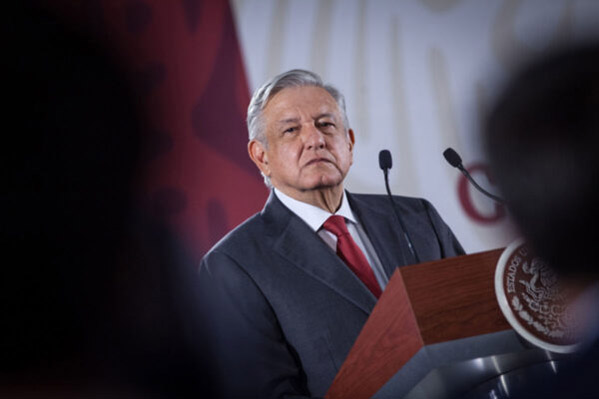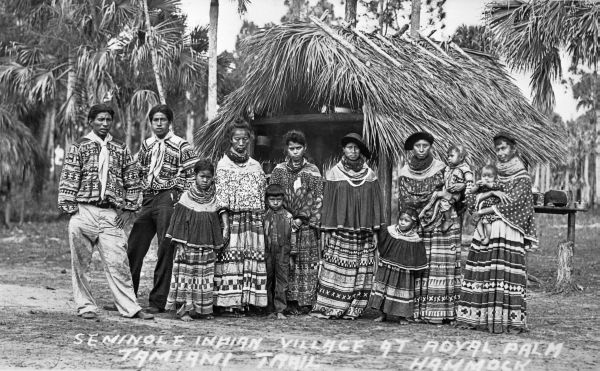Mauro Espínola and Luis Enrique Barrios, Alternativa Socialista (CWI in Mexico)
The victory of Andrés Manuel López Obrador (AMLO) and the MORENA party in the July 1, 2018 elections represented a turning point in Mexico’s history. Alongside the euphoria over this breakthrough and the enormous support for AMLO, there is an open debate taking place among a growing sector, which understands the need to be an active part of the process of political change. The crisis sparked by the shortage of petrol at the beginning of the year is a clear sign that in every corner of the country the fate of the country is being discussed.

In essence, AMLO intends to set in motion a ‘capitalism with a human face’, through measures of redistribution of income by indirect means. Thus he tries to balance the private ownership of the means of production, banking and large land estates with the social rights of the majority of the population. The possibility of a policy that benefits the majority is undoubtedly the basis for the majority support for AMLO and the 4T. However, the limits of AMLO’s policy are already apparent, and this will be especially clear when the ruling class fears losing control of the situation. It is no accident that, from the beginning of his Presidency, the capitalist press and intellectuals have endlessly attacked AMLO and his proposals.
We, on the other hand, are not sectarians. It is clear to us, as Rosa Luxemburg points out, that “there is an inseparable link between social reform and social revolution, in that the struggle for social reform is the means, but social revolution is the goal “.
World recession and dependent Mexican capitalism
In order to establish the perspectives for the class struggle in Mexico, two factors must be taken into account. One, the world crisis that the system is going through in all fields – economic, social, political and world relations – is even deeper than that of a decade ago. And two, that the Mexican economy, like all national economies, is indissolubly tied to the world economy.
A clear example is Mexico’s trade balance, which has a deficit of almost $11 billion in 2017. This means that in the relationship between exports and imports, which constitutes the trade balance, exports have the predominant weight. The U.S. is the destination of 80% of Mexican exports,. An even poorer rate of growth of U.S. Capitalism in the next period will reduce the demand for imports in that country, hindering economic growth in Mexico.
The dominant idea on the Mexican left, which sees the dependence of Mexican capitalism as synonymous with poverty and economic backwardness, is mistaken. A country with billionaires like Carlos Slim or the Sertvije family, owners of Grupo Bimbo, cannot be considered a poor country. Much less when it is the fifteenth largest economy in the world, ranked above Saudi Arabia and Switzerland, as well as being the world’s second biggest oil exporter. Dependence, on the other hand, is just the way in which an economy is anchored or tied to the world market. In this sense, Mexico is a dependent country to the extent that the development of its internal market is subject to the enormous pressures of the external market.
This is the product of a bourgeoisie that in the last three decades, has opted for production at low costs and to increase its profits by selling in the external market. In other words, the great dependence of the Mexican economy is based on the fact that the national economy has orientated towards the external market, in turn depressing the domestic market due to the low wages used as a lever to improve its position in the international market.
The weak Mexican domestic market
In this context, we must consider the economic policy proposed by Obrador, which focuses on strengthening the domestic market by increasing the indirect income of working families. In other words, through social programs such as scholarships for students, the ‘Youth Building Futures Programme’ or the national extension of pensions. These are intended to work in place of increases in direct income, wages, to encourage consumption and thereby increase demand, thus strengthening the domestic market.
The above, of course, may give some results in the short or medium term, but it will not solve the underlying economic crisis. At an international and national level there is an overabundance of goods and capital that do not find an outlet in the market, so all expectations of growth are built on a speculative bubble that sooner or later will burst. This will, of course, mean a worsening of the divisions among the bourgeoisie, already expressed in last July’s elections. Moreover, the 1 July election defeat was also the defeat of the sector that favored orientating to the external market via poor wages that gave comparative advantages to Mexican manufactures in the international market. We will witness a growing struggle between two sectors of the bourgeoisie to orient Obrador’s economic policy.
Although it is true that there was a wage increase of 16% in the economic zone around the Northern border, and of about 5% in the rest of the country, these are insufficient. According to an UNAM (Mexico’s largest university) study, in the last 30 years accumulated purchasing power in the country has decreased by almost 80%! This is the level of wage increases that would be necessary to return living standards to the level of decades ago, never mind the necessary increase. While the government has proposed an increase in funding for grants for students and apprentices, the raising of the minimum wage is the key necessary measure which must be taken if the objective is dynamizing the national economy and internal market.
Public finances, cuts and income redistribution
The problem is that public finances, as they exist today under Mexican capitalism, give very little room for maneuver and are insufficient to guarantee the transformation of the living conditions of working people. Suffice to say that approximately 70% of tax revenue, i.e. the income resulting from the collection of taxes, is contributed by workers and small business-owners. While the big companies, banks and consortiums barely contribute 30%.
According to information released earlier this year, in Peña Nieto’s (previous PRI President) six-year term, the tax authorities ceded 272 billion in taxes to entrepreneurs, bankers and builders such as Slim, Salinas Pliego, Vazquez Raña or Roberto Hernandez Ramirez of Grupo Banamex. When compared to the much-scandalized theft of petrol during the same period, equivalent to 69 billion pesos, the potential tax money given away to big bosses represents 400% of the value of petrol theft.
In this regard, Obrador has timidly announced what appears to be the beginning of a fiscal reform, not a policy to tax the big fortunes more, but merely the end of fiscal loopholes i.e the legal evasion of taxes by big business through false altruism and social work. He has said that there will be no tax reform in the first half of his period in power, instead opting to combat corruption to increase state revenues and only then take measures to increase fiscal income. The problem here is that AMLO seems to trust the good will of the capitalists to cooperate with these measures. In reality, the new phase of international economic difficulties, with the threat of a new recession, will see the Mexican bourgeoisie less willing than ever to part with more of its resources to aid the state coffers.
Marxists affirm that a policy such as the one proposed by Obrador will not solve in depth the economic crisis or the pressing problems of the working class. A ‘distribution’ policy as proposed by Obrador could only partially alleviate the problems, in the best of cases. Artificial measures such as indirect income initiatives can also serve to provide a misleading facade, while in reality accentuating and deepening the economic crisis, and with this the problems that have encouraged the class struggle in the last decade.
Political balance sheet of AMLO in power
It is absolutely true that AMLO’s victory in the last presidential elections and the resounding defeat of the traditional right-wing parties represented a qualitative leap forward in the class struggle. Today, over a year after that day, it is absolutely necessary to take stock of this event and its implications, taking into account, above all, the interests of the working class in its fight against capital.
AMLO becoming President one year ago is not an isolated fact, but the product of a long period of struggle by young people and workers. It is a struggle that goes back to the mass movement that built the candidacy of Cuauhtémoc Cárdenas of the National Democratic Front in 1988 and that could only be defeated by means of a titanic electoral fraud to impose the PRI candidate, Salinas de Gortari, in power. The same movement that had another wonderful expression in the 2006 elections and the massive fight against another electoral fraud, this time to install the PAN candidate, Calderon.
But during all those years, we also saw other kinds of expressions of struggle, not only through the electoral front, but through open revolutionary insurrections, especially the cases of the armed uprising of the EZLN in 1994, the struggle of the Frente de Pueblos en Defensa de la Tierra (FPDT) of San Salvador Atenco in 2002 or that of the Asamblea Popular de los Pueblos de Oaxaca (APPO) in 2006. Just to mention a few. Also during this period, we will witness the resurgence of the struggle for independent trade unions, which semi-paralyzed the administration of the first PAN government headed by Fox.
This was a long contradictory period, marked by ebbs and flows of class struggle, advances and setbacks in the organization of the working class. But also of a growing tension among the oppressed, who were experimenting with all sorts of ways to shake off a policy inaugurated by the PRI and years later inherited enthusiastically by the PAN. In the early 1980s, the PAN governments developed all sorts of initiatives to dismantle a whole series of social conquests resulting from the Revolution of 1910-1920 and others won by the struggle of the workers decades after that historic event.
Under this policy, practically all public industry was privatized, salaries were pulverized, most collective labour contracts were mutilated or eliminated, and the poor peasantry was left to its own devices. In addition to the fact that public spending was significantly cut in all social areas, while multi-million dollar amounts were transferred from the public coffers to the accounts of big capital in an open manner through the payment of the state debt, through the bank bailout in 1998, and by means of the writing off of tax payments to the giants of industry and banking. The result of all this was an enormous concentration of wealth, to the extent that in 2015 the richest 1% of the country’s population already monopolized 43% of the value of the Mexican economy, while on the other hand the number of poor people went from 46 million in 1990, to 55.3 million in 2014.
This period was also marked by an increasingly acute weakening of the right-wing parties and by the decomposition of Mexican capitalism, notably in the economic collapses of 1995 and 2009. An enormous level of social discontent matured at such a rate that the political regime embodied by the ‘PRIAN’ (PRI and PAN) became unsustainable.
This discontent worsened with the imposition of Peña Nieto in 2012, who promoted a program of attacks and counter-reforms that took the class struggle to a level not seen since the 1980s. It is enough to remember the days of #YoSoy132 (a student movement against Nieto), the tenacious struggle of the teachers against the education reform in 2013 or the mobilizations in 2014 following the disappearance of student activists in Ayotzinapa. In this context of class struggle, the bourgeoisie, deeply divided in its traditional organizations, was forced to pull back from implementing a new electoral fraud in 2018, by the risk of facing the wrath of the dispossessed masses with a valuable recent experience which gave the ruling class no guarantee that things could be kept under control.
The result of July 1, 2018 represents a historic event. Because first and foremost, the dispossessed masses managed to impose their will on the right and the bourgeoisie, this time on the electoral plane to bring to the Presidency of the Republic a candidate they consider their own. Second, because city and rural workers achieved this result overwhelmingly: 53.19% (more than 30 million votes) for AMLO against 22.28% for Anaya of the PAN-PRD-MC coalition and 16.41% for Meade of the PRI-PV-NA.
It is true and must be said that AMLO promoted an inter-class front with the objective of guaranteeing a favorable result in the elections. But, above all, it was the drive and strength of the dispossessed masses, as well as the weakness of the right wing, itself the result of the struggle of the oppressed themselves, which ensured the triumph over the PRIAN establishment.
However, this inter-class front launched by AMLO, allowed elements from among the ranks of those right-wing sectors and the bourgeoisie to hitch themselves to the cart of the ‘4T’. This was the case of the electoral alliance with the clerical PES, or that of the businessman, Alfonso Romo, current head of the office of AMLO’s presidency. The same can also be said of ex-PRIists such as Gerardo Sosa of the State of Hidalgo or the former national president of the PAN, Manuel Espino. We are talking about a whole layer of individuals who, although they would be willing to support some of AMLO’s policies, their limit would come as soon as the masses, thirsty for social justice, demanded measures of such depth that they put the political and economic interests of those kinds of characters in danger. A battle must be waged against these figures to purge the government of openly capitalist elements who will show their true faces sooner or later, as we have seen with Urzua, the former Interior Minister.
The 4T: between capital and workers
In essence, the inter-class front launched by AMLO is an organized expression that reflects the content of the 4T policy and the contradiction that governs it. In other words, it is an attempt to govern for the poorest without breaking with capitalism, in which the expectations of the business community can also be met, spearheaded by an attack on corruption, and the elimination of all kinds of privileges and unnecessary expenses in public administration. Central to the plan is also the recovery of PEMEX’s (state oil company) productive base, as the most important source of public resources, which in 2016 represented 18% of the state’s income, as opposed to 45% in 2008.
To this contradiction of the 4T is added the fact that the government is under constant aggression from what for years AMLO himself called “the mafia of power”. These constant attacks are an attempt to undermine the government and prepare the ground for its removal when it is deemed necessary. It is in this context that the constant speculative attacks against the Mexican peso currency launched by debt rating agencies such as Moody’s, Standard & Poor’s, and others, responsible to a large extent for the 2008 real estate crisis, as well as the systematic harassment of Trump against Mexico, are framed.
Another similar example is the media war, linked to the fight against huachicol (illegal fuel) or the theft of fuel from PEMEX, which produced a shortage of fuel at the beginning of the year and which led to a real campaign of terror on the radio, press and television. In opposition to this, thousands of workers assumed the battle as their own, assuming the difficulties and sacrifices that this struggle meant. It is no coincidence that precisely in the heat of the fight against fuel theft, Obrador’s popularity reached 86%, the highest in decades.
The framework of capitalism has imposed serious limits on AMLO, including having to move from the policy of “open arms” for Central American immigrants to the transfer of 6,000 National Guard troops to the southern border in order to harden immigration policy after the pressures and threats of Trump in early June. In order to achieve its dirty objective, Trump threatened to impose a 5% tax on Mexican imports to the U.S., based on the fact that more than 40% of foreign investment in Mexico comes from the U.S. and that this country is the destination of 80% of Mexican exports. All this also at a time when the world economy and, within it, that of Mexico are showing serious signs of slowing down.
This makes it clear that contrary to the idea of the possibility of opening a period of social peace, we will witness new and more developed class confrontations. The marvelous example of the strike of the Matamoros workers demanding a 20% wage increase, promised by AMLO for workers on the border strip, and a bonus of 32,000 pesos, is a clear example of the atmosphere of struggle and bravery among millions of workers. On the other hand, the bourgeoisie and its representatives will try at all costs to maintain their privileges, launching new campaigns against the government of Obrador and particularly against what it represents: the millions of working women and men, young people and peasants who seek to put an end to years of misery, contempt and oblivion.












